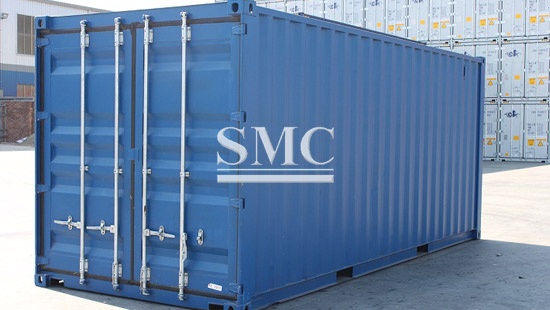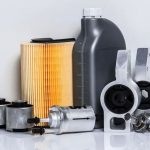Classified by material used
Depending on what material is used in the main part of the box, it is called a container made of material. According to the classification of materials used, containers can be divided into three types:
(1) Aluminum alloy container has the advantages of light weight, beautiful appearance, anti-corrosion, good elasticity, convenient processing, low processing cost, low repair cost and long service life; the disadvantage is high cost and poor welding performance;
(2) Steel container has the advantages of high strength, firm structure, high weldability, good water tightness and low price; the disadvantage is heavy weight and poor corrosion resistance;
(3) FRP container has the advantages of high strength, good rigidity, large internal volume, good heat insulation, anti-corrosion and chemical resistance, easy to clean and easy to repair; the disadvantage is that it is heavy, easy to age, and the strength of the bolt is reduced.
Classified by structure
Containers classified by structure can be divided into three categories:
(1) Inner column and outer column containers, mainly refers to aluminum alloy containers, internal column containers means that side columns (or end columns) are located inside the inverted wall or end wall; external column type containers refer to side columns (or The end post) is located outside the inverted wall or the end wall;
(2) Folding container means that the main components of the container (side wall, end wall and box top) can be simply folded or disassembled, and can be easily combined again when used again;
(3) Thin-shell container is a steel body that combines all the components. Its advantage is that it is light in weight and can adapt to the torsion generated without causing permanent deformation.
Classified by purpose of use
1.Ordinary container
Ordinary containers, also known as dry cargo containers, are mainly used for shipping groceries, and are usually used for shipping cultural goods, daily necessities, medicines, textiles, handicrafts, chemical products, hardware, electrical machinery, instruments and machine parts. Such containers account for 70 to 80% of the total number of containers. In addition to frozen goods, live animals, and plants, dry cargo containers can be used for goods that are suitable for container transportation in terms of size and weight.
2.Frozen container
The freezer container is divided into two types: external and built-in. The temperature can be adjusted from -60 ° C to +30 ° C. The built-in container can freely start the freezer during transportation to keep the container at the specified temperature; while the external type must rely on the container special vehicle, the ship and the dedicated yard, and the freezer equipped on the station to cool. This box is suitable for transporting butter, chocolate, frozen fish, condensed milk, margarine and other items in the summer.

3.Open top container
Open top container, also known as open top container, open top cabinet, this type of container does not have a box top, but a canopy made of foldable top beam supported canvas, plastic cloth or plastic coated cloth can be lifted from the top of the box For loading and unloading cargo, the top of the open top box can be opened or not fixed. The top of the container can be covered with a tarpaulin, and the watertight requirements are the same as the dry container. Suitable for loading heavy loads such as glass plates, steel products, machinery, etc.
4.Frame container
The frame container has no roof and sides, and is characterized by loading and unloading from the side of the container. Excess heavy cargo is the main carrier, and it is also convenient to load livestock and bare goods such as steel that can be exempted from packaging. It can also facilitate the lifting of large ultra-wide, ultra-high cargo.
5.Livestock containers
Livestock containers are made of metal mesh on the side of the box, which is well ventilated and easy to feed. It is a special container specially designed for the transport of live animals such as cattle and horses.
6.Tank container
Tank containers are also called liquid containers. It is a special container manufactured for transporting liquid goods such as food, medicines and chemicals. The structure is to fix a liquid tank in a metal frame. The international standard tank is a stainless steel pressure vessel that is mounted in a secured outer frame. Most of the tank body is made of 316 stainless steel. Most tanks have steam or electric heating, inert gas protection, pressure relief and other optional equipment for fluid handling and handling.
7.Platform container
The platform container is shaped like a railway flatbed, is a floor with high load carrying capacity and has no superstructure container. Suitable for loading overweight and long cargo, the length can reach more than 6 meters, the width is more than 4 meters, the height is about 4.5 meters, and the weight can reach 40 metric tons. And the two platform containers can be connected and loaded with 80 metric tons of goods. It is very convenient to use this box to ship the car.
8.Ventilated container
The ventilated container wall has 4-6 venting holes, and the inner wall is coated with plastic layer, which is suitable for loading fresh vegetables and fruits, etc.
9.Insulated container
The insulated container box has a heat insulation layer, and the top of the box has an inlet and outlet air outlet which can adjust the angle. The outside air and the wind direction can be used to adjust the temperature inside the box, and can be protected from the outside air temperature for a certain period of time when closed. Suitable for shipping goods that are sensitive to temperature and humidity.
10.Bulk container
Bulk containers generally have 2 or 3 small hatches at the top for loading. There is a lifting frame at the bottom, which can be raised to a tilt angle of 40° for unloading. This kind of box is suitable for bulk goods such as grain and cement. If you want to carry out plant quarantine, you can also steam the tank in the box.
11.Bulk powder container
The bulk powder container is basically the same as the bulk container, but the nozzle and the straw are used for loading and unloading.
12.Hanging container
Hanging containers are suitable for containers that carry clothing items. With the development of international trade, the structure of goods is constantly changing, and various types of special or multi-purpose containers will appear in the future.
Guest contributors are welcome at the Alloy Wiki.It is a weekly wiki and guide on alloy information and processing technology, while also about the vast array of opportunities that are present in manufacturing. Our team of writers consists of a Machining Material Supplier / Machinist / Tool and Die Maker, a Biomedical Engineer / Product Development Engineer, a Job Development Coordinator / Adjunct Professor, and a President and CEO of a manufacturing facility.
Link to this article:Container Type Distinction and Introduction
Reprint Statement: If there are no special instructions, all articles on this site are original. Please indicate the source for reprinting:Alloy Wiki,thanks!^^


